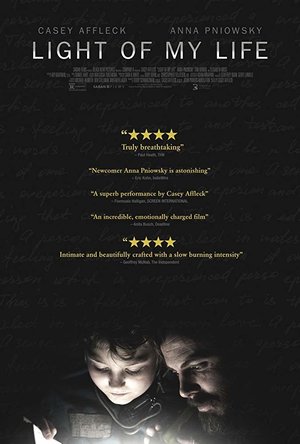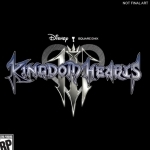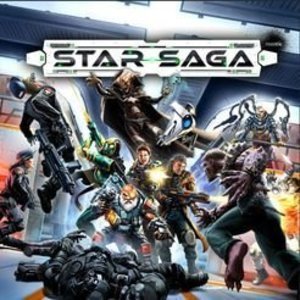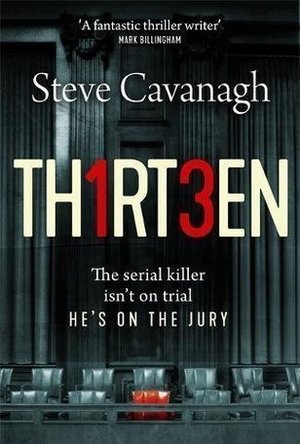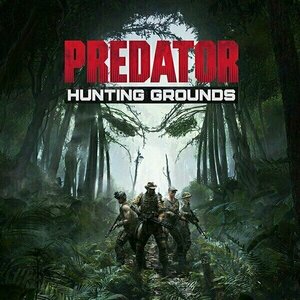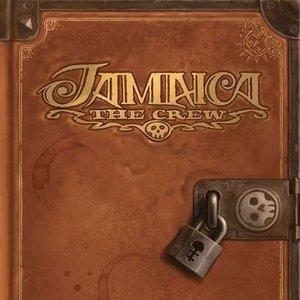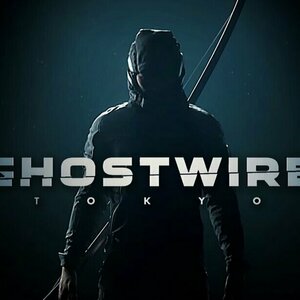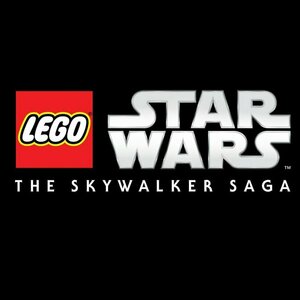Search
Search results
Phillip McSween (751 KP) rated Light of My Life (2019) in Movies
Mar 10, 2020
Not Revolutionary But Decent
A father and daughter try to survive in a post-apocalyptic world where a virus has taken out nearly all of the female population. Light of My Life isn’t going to revolutionize post-apocalyptic movies, but I would say it’s a worthy addition. It makes you care and, more importantly, it makes you think.
Acting: 10
Casey Afleck is sensational in his role as Dad. You can feel the love he has for his daughter Rag (Anna Pniowsky) and see how torn he is between trying to be strong for her while trying not to break down himself. Pniowsky is solid as well playing the daughter. She reads the role with a defiant attitude, as a girl having to quickly grow up in a crazy world. They work perfectly together onscreen.
Beginning: 10
Characters: 10
Cinematography/Visuals: 6
Conflict: 6
Casey Afleck, also the director, effectively builds tension throughout the journey. However, there are a number of times where you expect something to happen and it doesn’t. Ultimately, the conflict wasn’t quite so strong as I would have hoped.
Entertainment Value: 5
Because not as much action is happening in a movie that’s almost two hours, my level of being entertained was up and down. I did find myself checking out quite a few times especially when it’s the rinse and repeat of finding a campground, scouting, and laying down for the night. I just wish there were a few more close scrapes to keep me guessing.
Memorability: 3
This type of movie has been done before on the big screen and in video games. Unfortunately there’s not quite enough here to make it stand out. Don’t get me wrong, it’s definitely not a bad movie. It just lacks the necessary oompf to be much more than “just ok”.
Pace: 6
Attempts to move steadily before it slows down to a crawl again and again. There is no sense of urgency in the film and it drove me mad at times. Would have been much happier with the pace had the runtime been shorter.
Plot: 10
Resolution: 6
Decent ending, but…just decent. I question the decision of closure. Like a lot of the other facets of the movie, I was hoping for more.
Overall: 72
Light of My Life made me smile at times, but infuriated me at times when I knew I was watching something that could be better. It’s a decent movie and a few tweaks would have really done the trick for me. Now that I’ve seen it once, it’s not one I need to check out again.
Acting: 10
Casey Afleck is sensational in his role as Dad. You can feel the love he has for his daughter Rag (Anna Pniowsky) and see how torn he is between trying to be strong for her while trying not to break down himself. Pniowsky is solid as well playing the daughter. She reads the role with a defiant attitude, as a girl having to quickly grow up in a crazy world. They work perfectly together onscreen.
Beginning: 10
Characters: 10
Cinematography/Visuals: 6
Conflict: 6
Casey Afleck, also the director, effectively builds tension throughout the journey. However, there are a number of times where you expect something to happen and it doesn’t. Ultimately, the conflict wasn’t quite so strong as I would have hoped.
Entertainment Value: 5
Because not as much action is happening in a movie that’s almost two hours, my level of being entertained was up and down. I did find myself checking out quite a few times especially when it’s the rinse and repeat of finding a campground, scouting, and laying down for the night. I just wish there were a few more close scrapes to keep me guessing.
Memorability: 3
This type of movie has been done before on the big screen and in video games. Unfortunately there’s not quite enough here to make it stand out. Don’t get me wrong, it’s definitely not a bad movie. It just lacks the necessary oompf to be much more than “just ok”.
Pace: 6
Attempts to move steadily before it slows down to a crawl again and again. There is no sense of urgency in the film and it drove me mad at times. Would have been much happier with the pace had the runtime been shorter.
Plot: 10
Resolution: 6
Decent ending, but…just decent. I question the decision of closure. Like a lot of the other facets of the movie, I was hoping for more.
Overall: 72
Light of My Life made me smile at times, but infuriated me at times when I knew I was watching something that could be better. It’s a decent movie and a few tweaks would have really done the trick for me. Now that I’ve seen it once, it’s not one I need to check out again.
Gareth von Kallenbach (980 KP) rated Monsters University (2013) in Movies
Aug 7, 2019
Monsters University brings Billy Crystal, John Goodman, and the whole gang back in what I can only describe as a huge win.
Twelve years after Disney and Pixar brought us the wildly successful Monsters Inc., Pixar finally follows up with this year’s must-see family movie, which comes to us in the form of a prequel.
Monsters University opens by showing us a very young Mike Wazowski, who gets lost on a school trip to a very familiar scare floor at Monsters Inc. After surviving a trip to the human realm, he receives a hat from one of the professional scarers, emblazoned with MU. From that point on, a wide-eyed Wazowski dedicates his life to getting into Monsters University.
Fast forward many years and Mike is at his first day of college. MU becomes the backdrop for the education, friendships, scare games, and destiny-setting events that lead into the original movie we already know and love.
I was a bit skeptical going in I was a fan of the original, but prequels are damned hard to pull off, and kid/family movies aren’t typically my preference. Fortunately, after the first 15 minutes, the humor started picking up. The writers, designers, and artists did a masterful job of combining kid-humor antics with adult humor. Like many Pixar films, it contains one-liners and inside jokes that require life experience to really appreciate. (There was nothing dirty, just more adult-themed quips.)
I was impressed by the pacing, the detail, and the seamless flow of the animation, not to mention the excellent voice talent. Crystal, Goodman, Nathan Fillion, Steve Buscemi, Helen Mirren, and all the other actors did top-notch work.
I do have two complaints. There was not one mention of Mike Wazowski’s parents. We don’t know who they were or what they did, nor did we even get a visual of what they looked like. In a world occupied by such a wide variety of monsters, my curiosity was piqued. Even more maddening was the repeated mention of James P (Sulley) Sullivan’s father, who was apparently a very famous scarer. Sully is repeatedly reminded of living up to the family name, yet we never see so much as a picture showcasing his family. Perhaps this was addressed in a scene that didn’t make it from storyboards to the final cut.
Those minor issues aside, Monsters University is done very well, and it is extremely entertaining. From the many laugh-out-loud moments to the solemn, tear-jerking scenes, this movie is a real win.
Twelve years after Disney and Pixar brought us the wildly successful Monsters Inc., Pixar finally follows up with this year’s must-see family movie, which comes to us in the form of a prequel.
Monsters University opens by showing us a very young Mike Wazowski, who gets lost on a school trip to a very familiar scare floor at Monsters Inc. After surviving a trip to the human realm, he receives a hat from one of the professional scarers, emblazoned with MU. From that point on, a wide-eyed Wazowski dedicates his life to getting into Monsters University.
Fast forward many years and Mike is at his first day of college. MU becomes the backdrop for the education, friendships, scare games, and destiny-setting events that lead into the original movie we already know and love.
I was a bit skeptical going in I was a fan of the original, but prequels are damned hard to pull off, and kid/family movies aren’t typically my preference. Fortunately, after the first 15 minutes, the humor started picking up. The writers, designers, and artists did a masterful job of combining kid-humor antics with adult humor. Like many Pixar films, it contains one-liners and inside jokes that require life experience to really appreciate. (There was nothing dirty, just more adult-themed quips.)
I was impressed by the pacing, the detail, and the seamless flow of the animation, not to mention the excellent voice talent. Crystal, Goodman, Nathan Fillion, Steve Buscemi, Helen Mirren, and all the other actors did top-notch work.
I do have two complaints. There was not one mention of Mike Wazowski’s parents. We don’t know who they were or what they did, nor did we even get a visual of what they looked like. In a world occupied by such a wide variety of monsters, my curiosity was piqued. Even more maddening was the repeated mention of James P (Sulley) Sullivan’s father, who was apparently a very famous scarer. Sully is repeatedly reminded of living up to the family name, yet we never see so much as a picture showcasing his family. Perhaps this was addressed in a scene that didn’t make it from storyboards to the final cut.
Those minor issues aside, Monsters University is done very well, and it is extremely entertaining. From the many laugh-out-loud moments to the solemn, tear-jerking scenes, this movie is a real win.
Charlie Cobra Reviews (1840 KP) rated the PlayStation 4 version of Kingdom Hearts III in Video Games
Jul 7, 2020
A Ton Of Fun
Kingdom Hearts III is an action/RPG developed and published by Square Enix. It was directed by Tetsuya Nomora and Tai Yasue, produced by Rie Nishi, written by Tetsuya Nomora and Masaru Oka with music composed by Yoko Shimomura, Takeharu Ishimoto, and Tsuyoshi Sekito.
Set after the events of Kingdom Hearts 3D: Dream Drop Distance and a sequel to Kingdom Hearts II; it's a conclusion to the "Dark Seeker Saga" and finds Sora and friends trying to prevent a second Keyblade War. Their search for the seven guardians of light has them visit worlds and cross paths with many different Disney and Pixar characters. Sora, nearly taken over by Xehanort, discovers he has lost his strength as a result. He resumes his travels accompanied by Donald and Goofy, in order to regain his "power of waking'. Traversing the realm of darkness, King Mickey and Riku search for Aqua while Kairi and Lea train to with their new Keyblades.
This game is a lot of fun. I never got to play the other Kingdom Hearts games so this was my first introduction to the series. I really liked the gameplay although sometimes the enemies are nothing more than canon fodder. But it was awesome with interacting with all the Disney and Pixar characters and seeing some of their worlds. I was very confused with the story but it goes by pretty well and there are lots of videos and pages on the internet if you want to catch up or dont remember what's going on or who's who. I didn't include some of the gameplay that showed boss fights because I didn't want to give anything away but the boss fights are a lot of fun. I just had the game on normal so I haven't found it very hard but I dont know if that stays the same if you increase the difficulty. You do have the options of changing gear for your allies and having the group eat meals for buffs as well as upgrade your keyblades but I generally stay away from that unless I have difficulty on a stage or boss. One thing I really didn't like so much was the spaceship battles that you get when traveling from world to world, I found them a bit tedious and annoying. But I'm sure some people liked them. All in all I'd give this game a 7/10. Below is a link to a video showcasing gameplay that I posted to YouTube.
Set after the events of Kingdom Hearts 3D: Dream Drop Distance and a sequel to Kingdom Hearts II; it's a conclusion to the "Dark Seeker Saga" and finds Sora and friends trying to prevent a second Keyblade War. Their search for the seven guardians of light has them visit worlds and cross paths with many different Disney and Pixar characters. Sora, nearly taken over by Xehanort, discovers he has lost his strength as a result. He resumes his travels accompanied by Donald and Goofy, in order to regain his "power of waking'. Traversing the realm of darkness, King Mickey and Riku search for Aqua while Kairi and Lea train to with their new Keyblades.
This game is a lot of fun. I never got to play the other Kingdom Hearts games so this was my first introduction to the series. I really liked the gameplay although sometimes the enemies are nothing more than canon fodder. But it was awesome with interacting with all the Disney and Pixar characters and seeing some of their worlds. I was very confused with the story but it goes by pretty well and there are lots of videos and pages on the internet if you want to catch up or dont remember what's going on or who's who. I didn't include some of the gameplay that showed boss fights because I didn't want to give anything away but the boss fights are a lot of fun. I just had the game on normal so I haven't found it very hard but I dont know if that stays the same if you increase the difficulty. You do have the options of changing gear for your allies and having the group eat meals for buffs as well as upgrade your keyblades but I generally stay away from that unless I have difficulty on a stage or boss. One thing I really didn't like so much was the spaceship battles that you get when traveling from world to world, I found them a bit tedious and annoying. But I'm sure some people liked them. All in all I'd give this game a 7/10. Below is a link to a video showcasing gameplay that I posted to YouTube.
Peter Shephard (2822 KP) rated Star Saga in Tabletop Games
Feb 22, 2021
Dozens of miniatures (3 more)
Great detail
Great looking system
Customisable and adaptable
A couple of miniatures are slightly too flexible (minor damage) (1 more)
Limited replayability without going "alone"
Initial impressions and first play
I managed to pick up a copy of Star Saga by Mantic, initially because I wanted the accessories more than the game.
I opened the box and was blown away by the quality and quantity of the miniatures as well as the accessories. We are talking dozens of characters with great sculpts, as well as the doors and consoles etc which look fantastic (and to get these alone is a significant cost). Additionally, you get a couple of dozen deck tiles, which are perfect for many sci fi miniatures games, and can be used separately to the in-box missions, if you wanted to go it alone/freestyle for other players.
I watched one of the Play Through videos on YouTube, and decided to try it myself. The rules are pretty clear and easy to follow, and it does help that the first 2-3 suggested moves are spelled out in the rulebook.
The first mission is a 1-2 player mission; you can literally play the game on your own, and there is enough flex in the Nexus (read- GM) cards to give an unknown quality to the game. Controlling one Character only, it is fully meant to get you used to the game.
First time I played, I rolled poorly (with 4 dice, usually failing to hit, or having my hits blocked by armour/scenery) and eventually got swamped by lesser minions. The second time I tried it, I managed to get through to the objective and complete it; having said that, the first loss was still useful as it meant I could see what impact damage and wounds had on the character.
The second mission is a larger mission, controlling several characters with different rules, with locked doors and more enemies - the rulebook also suggest if you have 2 copies of the game, to play the 1st and 2nd missions at the same time - although I actually think there is enough pieces to play the 2 together from the one box with minimal adjustment (maybe a slightly shorter corridor, for example).
In short, although it doesn't have the same "freeflow" as something like the old gem Warhammer Quest, it is close, and is a great sci fi dungeon crawler. There are also lots of expansions, but I need to defeat these bad guys first...
I opened the box and was blown away by the quality and quantity of the miniatures as well as the accessories. We are talking dozens of characters with great sculpts, as well as the doors and consoles etc which look fantastic (and to get these alone is a significant cost). Additionally, you get a couple of dozen deck tiles, which are perfect for many sci fi miniatures games, and can be used separately to the in-box missions, if you wanted to go it alone/freestyle for other players.
I watched one of the Play Through videos on YouTube, and decided to try it myself. The rules are pretty clear and easy to follow, and it does help that the first 2-3 suggested moves are spelled out in the rulebook.
The first mission is a 1-2 player mission; you can literally play the game on your own, and there is enough flex in the Nexus (read- GM) cards to give an unknown quality to the game. Controlling one Character only, it is fully meant to get you used to the game.
First time I played, I rolled poorly (with 4 dice, usually failing to hit, or having my hits blocked by armour/scenery) and eventually got swamped by lesser minions. The second time I tried it, I managed to get through to the objective and complete it; having said that, the first loss was still useful as it meant I could see what impact damage and wounds had on the character.
The second mission is a larger mission, controlling several characters with different rules, with locked doors and more enemies - the rulebook also suggest if you have 2 copies of the game, to play the 1st and 2nd missions at the same time - although I actually think there is enough pieces to play the 2 together from the one box with minimal adjustment (maybe a slightly shorter corridor, for example).
In short, although it doesn't have the same "freeflow" as something like the old gem Warhammer Quest, it is close, and is a great sci fi dungeon crawler. There are also lots of expansions, but I need to defeat these bad guys first...
BookInspector (124 KP) rated Thirteen in Books
Sep 24, 2020
More reviews on https://bbookinspector.wordpress.com
The story is told from a dual perspective – Eddie’s and Kane’s. These two characters would be our protagonists. Eddie is a defence attorney, a man with a very messed up personal life, who keeps making very dangerous decisions, and that is what makes him so awesome. Eddie has his faults and is not perfect, but at the same time, he is so intriguing and incredibly smart! Kane is a genius psychopath, (Hannibal Lecter could be his inspiration 😀 ), who can steal any identity he chooses. So, when you have these two amazingly developed personalities, the story can’t be boring. 😀
And of course, it is not! The narrative is very well paced, creating optical illusions and mind games in every chapter. It has plenty of twists, turns and unexpected findings, and the plot absolutely absorbed me. I love when authors include murderers and their thoughts in the thrillers, Kane’s actions and thoughts gave so much depth and intrigue to this book, and it was an absolute joy to read it. I really enjoyed Eddie’s smart moves while solving this case, but he was pretty lucky to get all the information delivered to him, without the help, I don’t think he could’ve succeeded as much. I really liked, that Steve Cavanagh utilized his knowledge of courts and jury in this book, there were plenty of new things I learned, and I am very grateful for that.
I loved the writing style of this book, it is easy and understandable, and this book can easily be read as stand alone. The characters used from the past are well explained and didn’t leave me confused. The chapters are pretty short, and due to constant change between the characters, the pages just fly by. I do have to throw in a disclaimer that there are plenty of blood, graphic murders, and other gross things described in this book, so before reading, make sure you can stomach that. 😀 I really enjoyed the ending and all the surprises it brought, I think it rounded up the story very nicely.
So, to conclude, Steve Cavanagh definitely knows what he is doing when it comes to writing. He is a master of crime novels, and even though this book was my first encounter with this author’s work, it definitely will not be the last. He chose perfect characters for this book, and the plot kept me guessing and always intrigued. I thoroughly enjoyed this court thriller, and it is an absolute must-read. I do hope you will like it as much as I did. Enjoy 🙂
The story is told from a dual perspective – Eddie’s and Kane’s. These two characters would be our protagonists. Eddie is a defence attorney, a man with a very messed up personal life, who keeps making very dangerous decisions, and that is what makes him so awesome. Eddie has his faults and is not perfect, but at the same time, he is so intriguing and incredibly smart! Kane is a genius psychopath, (Hannibal Lecter could be his inspiration 😀 ), who can steal any identity he chooses. So, when you have these two amazingly developed personalities, the story can’t be boring. 😀
And of course, it is not! The narrative is very well paced, creating optical illusions and mind games in every chapter. It has plenty of twists, turns and unexpected findings, and the plot absolutely absorbed me. I love when authors include murderers and their thoughts in the thrillers, Kane’s actions and thoughts gave so much depth and intrigue to this book, and it was an absolute joy to read it. I really enjoyed Eddie’s smart moves while solving this case, but he was pretty lucky to get all the information delivered to him, without the help, I don’t think he could’ve succeeded as much. I really liked, that Steve Cavanagh utilized his knowledge of courts and jury in this book, there were plenty of new things I learned, and I am very grateful for that.
I loved the writing style of this book, it is easy and understandable, and this book can easily be read as stand alone. The characters used from the past are well explained and didn’t leave me confused. The chapters are pretty short, and due to constant change between the characters, the pages just fly by. I do have to throw in a disclaimer that there are plenty of blood, graphic murders, and other gross things described in this book, so before reading, make sure you can stomach that. 😀 I really enjoyed the ending and all the surprises it brought, I think it rounded up the story very nicely.
So, to conclude, Steve Cavanagh definitely knows what he is doing when it comes to writing. He is a master of crime novels, and even though this book was my first encounter with this author’s work, it definitely will not be the last. He chose perfect characters for this book, and the plot kept me guessing and always intrigued. I thoroughly enjoyed this court thriller, and it is an absolute must-read. I do hope you will like it as much as I did. Enjoy 🙂
Jesters_folly (230 KP) rated Guns Akimbo (2019) in Movies
Jan 17, 2021
Contains spoilers, click to show
I'll start by saying that 'Guns Akimbo' is not for everyone. It's an ultra-violent, stupid, no brain action/comedy movie, and it doesn't pretended to be anything else. If you've seen the picture/meme of Daniel Radcliffe standing in a street in a dressing gown and bear-feet slippers waving two guns around then you've seen a publicity shot (and in some cases the DVD/Blu-ray cover) for' Guns Akimbo'.
The films premise is simple(ish), Miles (Daniel 'Harry Potter' Radcliffe) is a programmer for a mobile games company who's main outlet it getting inappropriate videos taken down and confronting internet Trolls. One day he comes across a site for 'Skizm', a real life, ultra violent game. Skizm don't take kindly to some of Miles's comments and break into his home and drug him. When Miles wakes up he has a gun bolted to both of his hands and is told that he has to kill Nix, the current top Skizm player or she will kill him.
'Guns Akimbo' does not hold back on anything, the film is filled with violence and drug use (including comparing the use of an asthma inhaler to taking cocaine), the humour is often immature (see Miles trying to work out how to go to the loo with guns bolted to his hands) and the sound track is fast and thumping. The film is made to feel like a real life computer game almost in the same way as 'Scott Pilgrim vs the World' and, in some ways comparing Guns Akimbo to Scott Pilgrim isn't wrong, Guns Akimbo is a lot more violent but, if Scot Pilgrim is a fighting game (such as Mortal Combat) then Guns Akimbo is a Doom Style shoot 'em Up. Guns Akimbo even has Scot Pilgrim style graphics occasionally interspersed through out.
The main problem I had with 'Guns Akimbo' is that it hasn't got a U.K. release, it's been released almost everywhere else but not here and, with no information as to why or when I can only assume that it's because our all powerful BBFC won't rate it or, at the very least want too many cuts to make it 15.
So, if you want an over the top violent film that you don't need to think about and you don't mind drug use, blood and daft humour then give 'Guns Akimbo' a go. Oddly there is no sex, I think this must be because it would get in the way of the violence.
The films premise is simple(ish), Miles (Daniel 'Harry Potter' Radcliffe) is a programmer for a mobile games company who's main outlet it getting inappropriate videos taken down and confronting internet Trolls. One day he comes across a site for 'Skizm', a real life, ultra violent game. Skizm don't take kindly to some of Miles's comments and break into his home and drug him. When Miles wakes up he has a gun bolted to both of his hands and is told that he has to kill Nix, the current top Skizm player or she will kill him.
'Guns Akimbo' does not hold back on anything, the film is filled with violence and drug use (including comparing the use of an asthma inhaler to taking cocaine), the humour is often immature (see Miles trying to work out how to go to the loo with guns bolted to his hands) and the sound track is fast and thumping. The film is made to feel like a real life computer game almost in the same way as 'Scott Pilgrim vs the World' and, in some ways comparing Guns Akimbo to Scott Pilgrim isn't wrong, Guns Akimbo is a lot more violent but, if Scot Pilgrim is a fighting game (such as Mortal Combat) then Guns Akimbo is a Doom Style shoot 'em Up. Guns Akimbo even has Scot Pilgrim style graphics occasionally interspersed through out.
The main problem I had with 'Guns Akimbo' is that it hasn't got a U.K. release, it's been released almost everywhere else but not here and, with no information as to why or when I can only assume that it's because our all powerful BBFC won't rate it or, at the very least want too many cuts to make it 15.
So, if you want an over the top violent film that you don't need to think about and you don't mind drug use, blood and daft humour then give 'Guns Akimbo' a go. Oddly there is no sex, I think this must be because it would get in the way of the violence.
LeftSideCut (3776 KP) rated Predator: Hunting Grounds in Video Games
May 9, 2020 (Updated May 9, 2020)
It's hard to rate Predator: Hunting Grounds properly. It's the kind of game that is ripe for updating on a regular basis, and it feels like there is still a lot to come (at least I hope there is!)
One of the main concerns is how long it will hold my attention for - as it stands, I'm still having fun with it, but it's hard to gauge how long that will last.
You get two choices - either you work as part of a 4-person fireteam, tasked with various objectives throughout a thick jungle setting, fighting AI controlled guerilla soldiers along the way, and trying to avoid the Predator hunting you down.
The other choice is of course, playing as The Predator, your objective being to hunt do the fireteam using the tools at your disposal. Thermal vision, flying discs, spear like weapons - lots of gadgets from the films are here to use.
As a fireteam member, 9 times out of 10, the match will end pretty quickly in my experience, with the either the Predator slaughtering the whole team within minutes, or the team shooting down the Predator. I've had a handful of games where the objectives have been completed and everyone has escaped. As the Predator, (still learning the ropes) I seem to get destroyed pretty quickly, whether info in for close range combat, or stick to the trees and try to fight long range - the game feels severely unbalanced, against both sides somehow. It's something that needs tweaking.
Graphics wise, it's not too bad. I'm seeing a lot of complaints about how it looks like a PS2 game, and that simply not true. The environments are colourful and the character models are what you would expect from a multiplayer PS4 game.
The only issue I've found along this subject is a fair few bugs littered throughout when it comes to said character models.
If you're a fan of the films, especially the first film, then you will undeniably get a huge kick out of Hunting Grounds. Going against the Predator can be genuinely tense, especially if you catch a glimpse of it jumping through the trees. It feels authentic at the very least, and the gameplay does have a visceral and frantic feel to it.
I really hope that more is added though. I'd love to see some content related to the sequels in the future, and some more variety added to gameplay. It's fun, but it feels like it could be so much more.
One of the main concerns is how long it will hold my attention for - as it stands, I'm still having fun with it, but it's hard to gauge how long that will last.
You get two choices - either you work as part of a 4-person fireteam, tasked with various objectives throughout a thick jungle setting, fighting AI controlled guerilla soldiers along the way, and trying to avoid the Predator hunting you down.
The other choice is of course, playing as The Predator, your objective being to hunt do the fireteam using the tools at your disposal. Thermal vision, flying discs, spear like weapons - lots of gadgets from the films are here to use.
As a fireteam member, 9 times out of 10, the match will end pretty quickly in my experience, with the either the Predator slaughtering the whole team within minutes, or the team shooting down the Predator. I've had a handful of games where the objectives have been completed and everyone has escaped. As the Predator, (still learning the ropes) I seem to get destroyed pretty quickly, whether info in for close range combat, or stick to the trees and try to fight long range - the game feels severely unbalanced, against both sides somehow. It's something that needs tweaking.
Graphics wise, it's not too bad. I'm seeing a lot of complaints about how it looks like a PS2 game, and that simply not true. The environments are colourful and the character models are what you would expect from a multiplayer PS4 game.
The only issue I've found along this subject is a fair few bugs littered throughout when it comes to said character models.
If you're a fan of the films, especially the first film, then you will undeniably get a huge kick out of Hunting Grounds. Going against the Predator can be genuinely tense, especially if you catch a glimpse of it jumping through the trees. It feels authentic at the very least, and the gameplay does have a visceral and frantic feel to it.
I really hope that more is added though. I'd love to see some content related to the sequels in the future, and some more variety added to gameplay. It's fun, but it feels like it could be so much more.
Purple Phoenix Games (2266 KP) rated Jamaica: The Crew in Tabletop Games
Sep 24, 2021
In the expansion review series, we take a look at a game expansion to discuss whether it is a necessary purchase/addition to one’s collection.
This breakdown is for the expansion for the popular pirate game Jamaica called The Crew. It is sold in a box in similar size to Jamaica’s main box, just a bit thinner.
This expansion will add a bevvy of new pirate characters to the game that can be recruited once a player pays the full amount at a port town (if you are unaware of the Jamaica base rules, read our review here). The red bottle of rum token in The Crew’s box acts as the main recruitment pawn by allowing any pirate adjacent to it to be recruited. The bottle may also be moved by paying one gold doubloon per space moved. Once recruited the pirate will command a space on one of the recruiting player’s ship’s hold and be treated like any other resource. Each recruited crewperson, however, will also furnish the player with special abilities and bonus points at the end of the game (more bonus points for crossing the finish line, less otherwise).
Should all owners of Jamaica run out and also grab The Crew in order to enjoy Jamaica? Maybe. Jamaica may evolve into a game that can become “samey” with many plays. Adding The Crew will inject a whole new aspect of play and various levels of new strategies to be applied. Having another resource to manage during the game may become more stressful, but those same resources, this time in the form of crewpersons, provide bonuses that range from helpful to immediate victory after special conditions are met.
Official recommendation: I love the base game of Jamaica. I never really thought I would NEED an expansion for it. In fact, I only picked this up because it was on sale and I saw many players enjoyed it. When I added it to my game my eyes were opened, and Jamaica became a new beast altogether for us. I say that if your games of Jamaica are becoming less and less enjoyable, then you should definitely grab a copy of The Crew. My only gripe is the box art. Why is it a book now instead of continuing with the treasure chest theme? It’s brown and has the Jamaica logo on it, but that’s where the similarities end. I wish they looked better together, that’s all I am saying.
This breakdown is for the expansion for the popular pirate game Jamaica called The Crew. It is sold in a box in similar size to Jamaica’s main box, just a bit thinner.
This expansion will add a bevvy of new pirate characters to the game that can be recruited once a player pays the full amount at a port town (if you are unaware of the Jamaica base rules, read our review here). The red bottle of rum token in The Crew’s box acts as the main recruitment pawn by allowing any pirate adjacent to it to be recruited. The bottle may also be moved by paying one gold doubloon per space moved. Once recruited the pirate will command a space on one of the recruiting player’s ship’s hold and be treated like any other resource. Each recruited crewperson, however, will also furnish the player with special abilities and bonus points at the end of the game (more bonus points for crossing the finish line, less otherwise).
Should all owners of Jamaica run out and also grab The Crew in order to enjoy Jamaica? Maybe. Jamaica may evolve into a game that can become “samey” with many plays. Adding The Crew will inject a whole new aspect of play and various levels of new strategies to be applied. Having another resource to manage during the game may become more stressful, but those same resources, this time in the form of crewpersons, provide bonuses that range from helpful to immediate victory after special conditions are met.
Official recommendation: I love the base game of Jamaica. I never really thought I would NEED an expansion for it. In fact, I only picked this up because it was on sale and I saw many players enjoyed it. When I added it to my game my eyes were opened, and Jamaica became a new beast altogether for us. I say that if your games of Jamaica are becoming less and less enjoyable, then you should definitely grab a copy of The Crew. My only gripe is the box art. Why is it a book now instead of continuing with the treasure chest theme? It’s brown and has the Jamaica logo on it, but that’s where the similarities end. I wish they looked better together, that’s all I am saying.
Gareth von Kallenbach (980 KP) rated the PC version of GhostWire: Tokyo in Video Games
Apr 15, 2022
The talented team at Tango Gameworks has returned with a new horror game, Ghostwire Tokyo, and advances upon their already impressive Evil Within series.
The game is set in a post-disaster Tokyo where the player character Akito is saved from death by a spirit known as KK who possesses the body of Akito and gives him supernatural powers to complete his quests.
Playing from a first-person perspective, players must explore a highly-detailed city to complete various mission objectives all the while staying clear of a deadly fog and evil creatures who know roam the city.
Players will be able to use special attack and defensive abilities which they can upgrade over time but must also be aware of the need to replenish the magic that powers them so being selective with attacks is a wise idea vs trying to rapidly cut down all enemies that are encountered.
Players can also obtain a Bow which can help when powers need to be recharged and seeing how dangerous and abundant enemies are, this is a good thing.
Akito is also hoping to save his sister who has been targeted by the main enemies in the game and this enables conflict between Akito and KK as they must work with one another despite seeming to have differing agendas.
The detailed city allows players to gather food for their health as well as Charms that can be redeemed at phone booths which will aid in their quest and the highly-detailed city is great to explore when not engaged in combat.
I did not see an option for English narration and while I had no problems at all with the Japanese spoken in the game, looking at the translation on the screen at times distracted me from some of the more intense segments and action.
The powers Akito deployed were very enjoyable and seeing the colorful discharges and defense modes really added to an already intense and engaging game. My only real issue with the game was the detailed story caused abundant and at times lengthy narrative scenes and when you just completed one to have another arise soon after a brief moment of player-controlled action often gave me the impression that I was watching the game versus controlling the action.
Fortunately, as the game unfolded the action and story were more than enough to keep my attention and made Ghostwire Tokyo one of the more unique and engaging games in recent memory and one that I recommend any Horror fan play.
4 stars out of 5
The game is set in a post-disaster Tokyo where the player character Akito is saved from death by a spirit known as KK who possesses the body of Akito and gives him supernatural powers to complete his quests.
Playing from a first-person perspective, players must explore a highly-detailed city to complete various mission objectives all the while staying clear of a deadly fog and evil creatures who know roam the city.
Players will be able to use special attack and defensive abilities which they can upgrade over time but must also be aware of the need to replenish the magic that powers them so being selective with attacks is a wise idea vs trying to rapidly cut down all enemies that are encountered.
Players can also obtain a Bow which can help when powers need to be recharged and seeing how dangerous and abundant enemies are, this is a good thing.
Akito is also hoping to save his sister who has been targeted by the main enemies in the game and this enables conflict between Akito and KK as they must work with one another despite seeming to have differing agendas.
The detailed city allows players to gather food for their health as well as Charms that can be redeemed at phone booths which will aid in their quest and the highly-detailed city is great to explore when not engaged in combat.
I did not see an option for English narration and while I had no problems at all with the Japanese spoken in the game, looking at the translation on the screen at times distracted me from some of the more intense segments and action.
The powers Akito deployed were very enjoyable and seeing the colorful discharges and defense modes really added to an already intense and engaging game. My only real issue with the game was the detailed story caused abundant and at times lengthy narrative scenes and when you just completed one to have another arise soon after a brief moment of player-controlled action often gave me the impression that I was watching the game versus controlling the action.
Fortunately, as the game unfolded the action and story were more than enough to keep my attention and made Ghostwire Tokyo one of the more unique and engaging games in recent memory and one that I recommend any Horror fan play.
4 stars out of 5
Otway93 (580 KP) rated the PlayStation 4 version of LEGO Star Wars: The Skywalker Saga in Video Games
Apr 26, 2022
Character Roster (2 more)
Humour
Gameplay
Character Skins (3 more)
Collectibles
Replayability
Crashing
The Force was with them...mostly.
Contains spoilers, click to show
After 2 years of waiting, it's finally here, and for the most part, we are not disappointed! As someone who was there for the release of the original Lego Star Wars in 2005, I can say things have got better, and things have got worse. It balances out pretty well.
The game allows us to play through one of the most important and popular cinematic sagas in history, never missing a moment as far as I've noticed, and not forgetting that hilarious Lego video game humour that we've come to love over the years.
With around 380 characters (kind of, I'll get to that) to unlock and play as, from the most beloved characters to the guy you forgot existed and still don't really remember from the films, you have character choices aplenty, with different skills and upgrades to keep you going for a long time.
So that's the positives, so far so good. But now, alas, some quite big negatives.
Firstly, as I mentioned, you can unlock around 380 characters to play as...kind of. The term "character" here is a bit misleading. There's plenty of characters, yes, more than you could really want, but with some characters they have multiple skins to show off their wardrobe from across the saga. Luke Skywalker for example has 17 different skins all classed as a separate character.
Secondly, the collectibles. In this game, the blue bricks that have featured in the free roam of previous games, have reached a new high in terms of quantity. Over 1,100 to be found, all can be found via a number of repetitive tasks.
Thirdly, crashing seems to be a huge issue on the PS5 version. The game for me has crashed and closed over a dozen times since day one while using the character selection. That plus the lack of a manual save feature makes for some frustrating moments and wasted time.
And finally, and perhaps most disappointingly, replaying levels. The entire game has 45 main story levels, 5 per episode, These levels are really only highlights, just the most memorable parts, you can't go back and enjoy everything from the beginning. Level 1 for example would see you instantly speeding away from the giant fish as you leave the Gungan city, while level 2 puts you straight into the Podracing.
Overall, this is a great game that I would recommend to any Star Wars fan, but it was far from perfect in terms of design.
The game allows us to play through one of the most important and popular cinematic sagas in history, never missing a moment as far as I've noticed, and not forgetting that hilarious Lego video game humour that we've come to love over the years.
With around 380 characters (kind of, I'll get to that) to unlock and play as, from the most beloved characters to the guy you forgot existed and still don't really remember from the films, you have character choices aplenty, with different skills and upgrades to keep you going for a long time.
So that's the positives, so far so good. But now, alas, some quite big negatives.
Firstly, as I mentioned, you can unlock around 380 characters to play as...kind of. The term "character" here is a bit misleading. There's plenty of characters, yes, more than you could really want, but with some characters they have multiple skins to show off their wardrobe from across the saga. Luke Skywalker for example has 17 different skins all classed as a separate character.
Secondly, the collectibles. In this game, the blue bricks that have featured in the free roam of previous games, have reached a new high in terms of quantity. Over 1,100 to be found, all can be found via a number of repetitive tasks.
Thirdly, crashing seems to be a huge issue on the PS5 version. The game for me has crashed and closed over a dozen times since day one while using the character selection. That plus the lack of a manual save feature makes for some frustrating moments and wasted time.
And finally, and perhaps most disappointingly, replaying levels. The entire game has 45 main story levels, 5 per episode, These levels are really only highlights, just the most memorable parts, you can't go back and enjoy everything from the beginning. Level 1 for example would see you instantly speeding away from the giant fish as you leave the Gungan city, while level 2 puts you straight into the Podracing.
Overall, this is a great game that I would recommend to any Star Wars fan, but it was far from perfect in terms of design.
